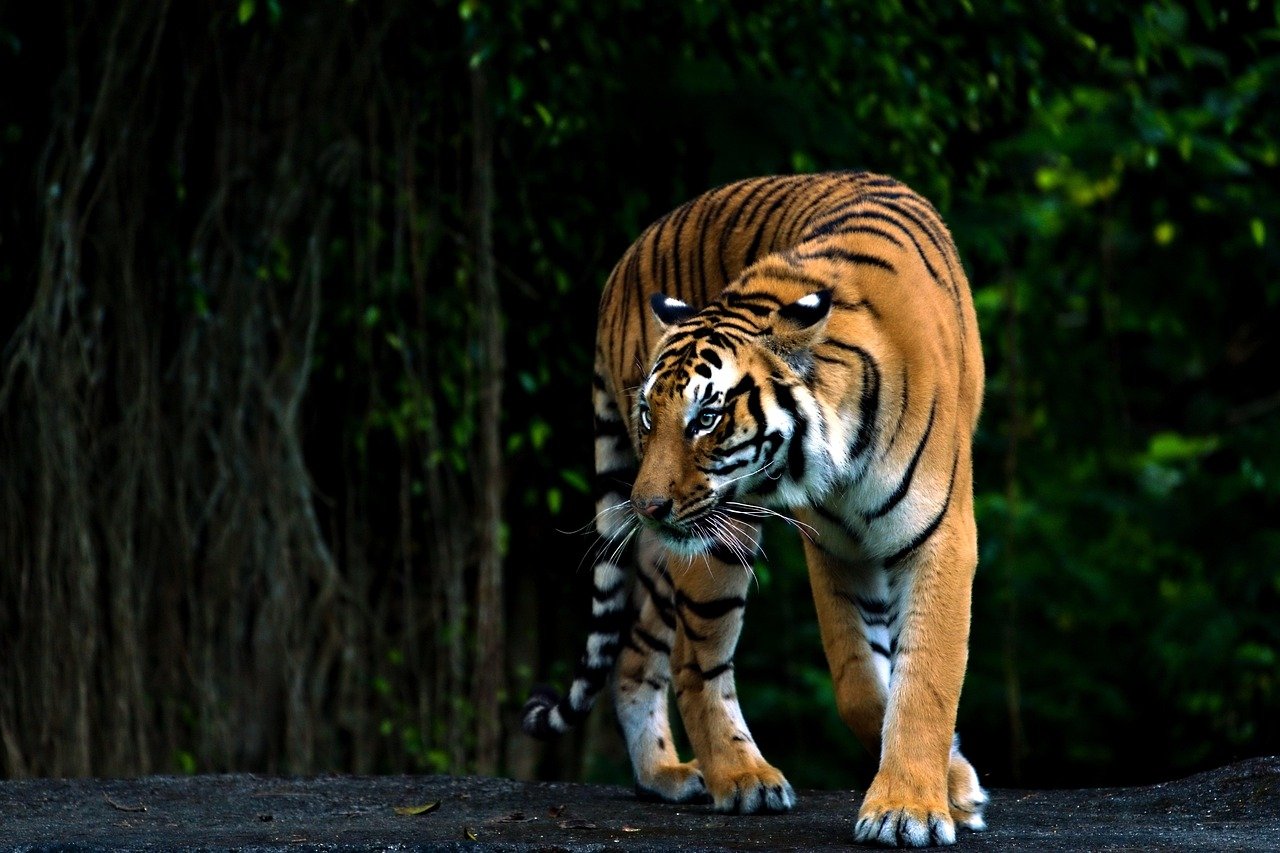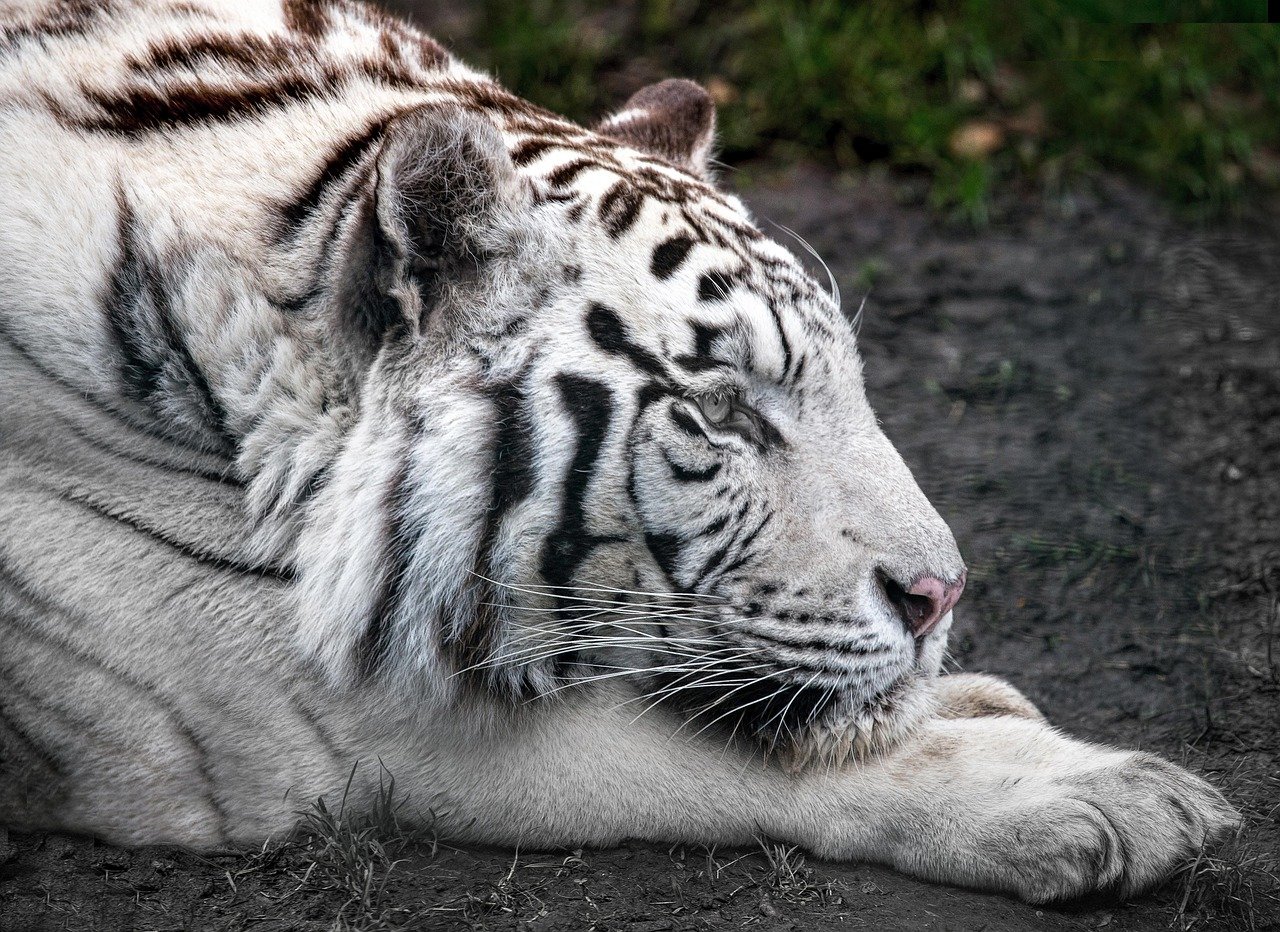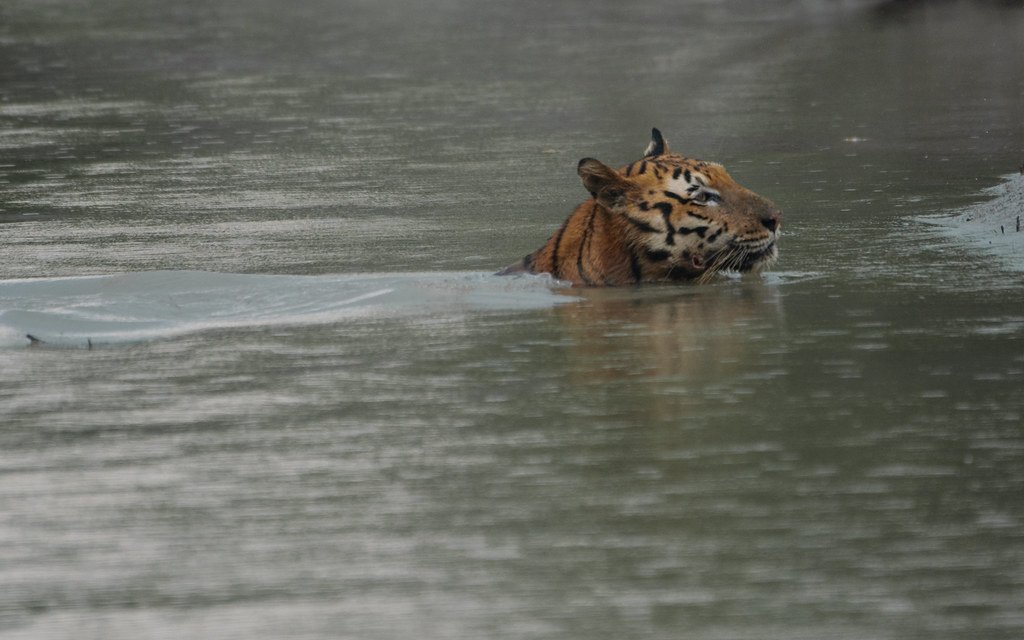Swimming Through Liquid Shadows

The Sundarbans tiger emerges from brackish water like a living flame against the dark mangrove backdrop. These magnificent cats have adapted to life in one of the world’s most challenging environments, where freshwater meets saltwater in an endless maze of waterways.
Unlike their mainland cousins, these tigers are exceptional swimmers who navigate the tidal waters with remarkable grace. Their powerful strokes carry them between islands as they hunt for prey that ranges from spotted deer to massive crocodiles.
Stripes That Tell Stories

Each Sundarbans tiger carries a unique pattern of black stripes that serves as both camouflage and identification. These markings become particularly striking when wet, creating an almost mystical appearance as water droplets cling to their golden coat.
Conservation researchers use these stripe patterns like fingerprints to identify individual tigers during population surveys. The intricate designs have helped scientists track family lineages and monitor the health of this critically endangered population.
Masters of the Mangrove Maze

The dense mangrove forests create a labyrinthine world where tigers move like ghosts through twisted root systems. These cats have developed extraordinary spatial memory to navigate territories that shift with each tide.
Their paws have adapted to grip wet, muddy surfaces and mangrove roots with remarkable precision. This sure-footedness allows them to leap between aerial roots and traverse unstable ground that would challenge most large predators.
The Honey Collector’s Nightmare

Local honey collectors wear masks on the back of their heads, believing tigers won’t attack if they think they’re being watched. This ancient practice reflects the deep respect and fear these magnificent predators command in their homeland.
The tigers’ stealth in the mangroves is legendary, with many locals reporting that these cats can approach completely undetected. Their ability to move silently through dense vegetation has earned them an almost supernatural reputation among the communities that share their habitat.
Salt-Tolerant Survivors

The Sundarbans tigers have evolved remarkable physiological adaptations to survive in their salty environment. Their kidneys can process higher levels of salt than other tiger subspecies, allowing them to drink brackish water when necessary.
This adaptation represents millions of years of evolution, as these tigers developed unique traits to thrive where few other large predators can survive. Their resilience in this harsh environment showcases nature’s incredible ability to find solutions to seemingly impossible challenges.
Night Hunters in a Tidal World

When darkness falls over the Sundarbans, these tigers transform into silent shadows moving through the moonlit waterways. Their night vision is perfectly adapted to hunt in the dappled light that filters through the mangrove canopy.
The rising and falling tides create a constantly changing hunting ground, forcing these cats to time their movements with precision. They’ve learned to predict where prey will be forced to move as water levels change throughout the day.
The Vanishing Roar

The haunting roar of a Sundarbans tiger echoes differently through the humid air of the mangroves, carrying across water in ways that create an almost otherworldly sound. This vocalization serves to establish territory in a landscape where visual markers are constantly washed away by tides.
Scientists estimate that fewer than 100 of these magnificent cats remain in the wild, making every roar a precious reminder of what we stand to lose. Their calls have become increasingly rare as habitat destruction and climate change threaten their survival.
Climbing the Canopy Giants

These tigers demonstrate remarkable climbing abilities as they scale the massive mangrove trees that can reach heights of over 80 feet. Their powerful claws and muscular build allow them to pursue prey or escape flooding waters by ascending into the canopy.
Witnessing a 400-pound tiger gracefully navigating tree branches is a sight that defies expectations about these ground-dwelling predators. Their arboreal skills add another dimension to their already impressive hunting repertoire.
Fishing in Ancient Waters

The Sundarbans tigers have developed unique fishing techniques, using their powerful paws to scoop fish from shallow waters during low tide. This behavior sets them apart from other tiger populations and demonstrates their remarkable adaptability.
Their fishing expeditions often occur in areas where the water is crystal clear, allowing observers to witness the incredible precision and patience these cats display. The sight of a tiger wading through water while hunting for fish creates an almost surreal wildlife encounter.
Mother’s Lessons in Survival

Female Sundarbans tigers teach their cubs essential swimming and navigation skills from an early age, often carrying them across waterways in their mouths. These maternal bonds are crucial for passing on the specialized knowledge needed to survive in this unique environment.
The cubs learn to read water currents, identify safe crossing points, and understand the complex relationship between tides and hunting opportunities. This education process can take up to two years, much longer than for tigers in other habitats.
Warriors Against the Rising Seas

Climate change poses an existential threat to the Sundarbans tigers as sea levels rise and severe storms become more frequent. These cats are literally fighting for their survival against forces beyond their control.
Their island territories are shrinking year by year, forcing tigers into smaller areas and increasing competition for resources. The irony is heartbreaking: the very adaptations that made them masters of this environment may not be enough to save them from its destruction.
The Sacred Bond

Local communities have worshipped these tigers for centuries, seeing them as guardian spirits of the mangrove forests. This spiritual connection has helped protect the cats through traditional beliefs and practices that emphasize coexistence rather than conflict.
The tigers appear in local folklore as shape-shifters and protectors, reflecting the deep respect these communities have for their feline neighbors. This cultural reverence has been one of the most effective conservation tools in the region.
Shadows of Hope

Despite the challenges they face, the Sundarbans tigers continue to inspire conservation efforts worldwide. Their story represents both the fragility of our planet’s ecosystems and the incredible resilience of life in the face of adversity.
Recent camera trap footage has captured young tigers playing in the mangrove waters, offering glimpses of hope for the future. These images remind us that even in the darkest times, life finds a way to persist and adapt.
The Final Stand

The Sundarbans tigers stand at a crossroads between survival and extinction, their fate intertwined with the health of one of the world’s most important ecosystems. Every conservation effort, every protected area, and every moment of awareness brings them closer to a sustainable future.
Their legacy depends on our actions today, as we work to preserve not just a species, but an entire way of life that has evolved over millennia. The clock is ticking, but it’s not too late to ensure that future generations will witness the majesty of tigers swimming through the mangrove shadows.
Conclusion

The Sundarbans tigers represent one of nature’s most remarkable success stories and one of its most urgent conservation challenges. These magnificent cats have shown us what’s possible when life adapts to extreme conditions, but they also remind us of what we stand to lose when ecosystems collapse.
Their future rests in our hands, and the choices we make today will determine whether the haunting roar of tigers will continue to echo through the mangrove forests for generations to come. Can we save these liquid shadows before they disappear forever?
Hi, I’m Bola, a passionate writer and creative strategist with a knack for crafting compelling content that educates, inspires, and connects. Over the years, I’ve honed my skills across various writing fields, including content creation, copywriting, online course development, and video scriptwriting.
When I’m not at my desk, you’ll find me exploring new ideas, reading books, or brainstorming creative ways to solve challenges. I believe that words have the power to transform, and I’m here to help you leverage that power for success.
Thanks for stopping by, Keep coming to this website to checkout new articles form me. You’d always love it!






